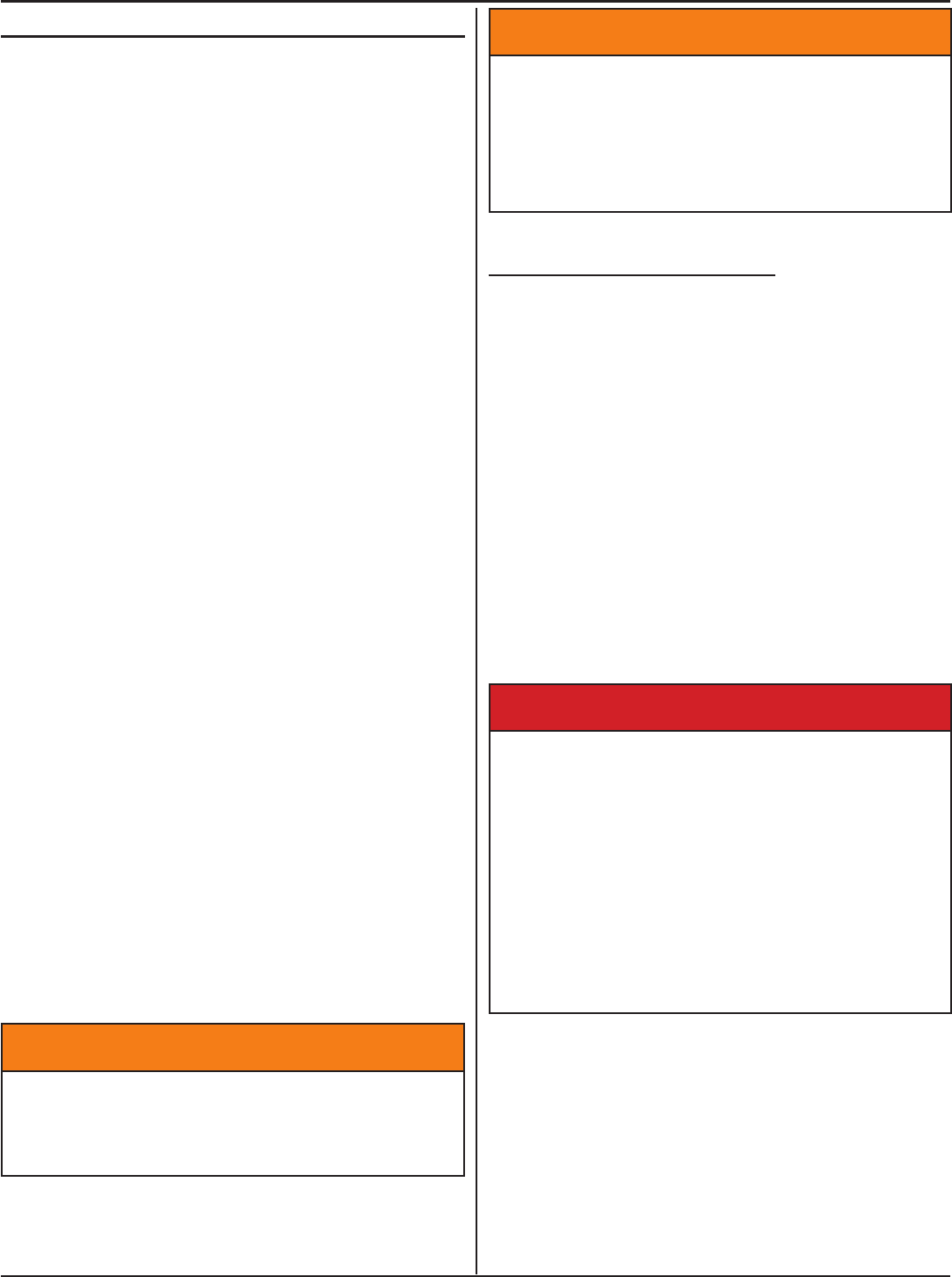Operating Guide

37
5. loadIng and unloadIng
Improper trailer loading causes many accidents and
deaths. To safely load a trailer, you must consider:
• Overall load weight.
• Load weight distribution.
• Proper tongue weight.
• Securing the load properly.
To determine that you have loaded the trailer within its
rating, you must consider the distribution of weight, as
well as the total weight of the trailer and its contents.
The trailer axles carry most of the total weight of the
trailer and its contents (Gross Vehicle Weight, or
“GVW”). The remainder of the total weight is carried by
the tow vehicle hitch.
It is essential for safe towing that the trailer tongue and
tow vehicle hitch carry the proper amount of the loaded
trailer weight, otherwise the trailer can develop an
undesirable sway at towing speeds, or the rear of the
towing vehicle can be overloaded. Read the “Tongue
Weight” information in Section 4.
The load distribution must be such that no component
part of the trailer is loaded beyond its rating. You must
consider the rating of the tires, wheels and axles. For
tandem and triple axle trailers, you must make sure
that the front-to-rear load distribution does not result in
overloading any axle.
Towing stability also depends on keeping the center
of gravity as low as possible. Load heavy items on
the oor and over the axles. When loading additional
items, be sure to maintain even side-to-side weight
distribution and proper tongue weight. The total weight
of the trailer and its contents must never exceed the
total weight rating of the trailer (Gross Vehicle Weight
Rating, or “GVWR”).
Do not transport people, containers of hazardous
substances, or flammable liquids. The exception is fuel
in the tank of vehicles or equipment being hauled.
^ WARNING
Do not transport people inside or on your
trailer. Besides putting their lives at risk,
the transport of people in or on a trailer is
illegal.
^ WARNING
Do not transport ammable, explosive,
poisonous or other dangerous materials in
your trailer.
The exception is fuel in the tank of vehicles
or equipment being hauled.
5.1 dump traIler hazardS
A dump trailer is specically designed for hauling cargo
that is to be dumped. A dump trailer is not designed
for transporting livestock and/or horses. The major
hazards associated with dump trailers are:
• Overloading.
• Improper weight distribution; both side to side and
front to back.
• Modifying or altering dump controls.
• Not dumping from a solid and level foundation.
• Not fully opening rear doors when dumping.
• Getting under a raised dump body.
• Not using, or improperly using the body prop.
• Modifying or altering hydraulic components.
• Jerking the trailer, or hydraulics, to loosen load.
• Trailer contacting or coming near overhead power
lines when body is raised.
^ DANGER
NEVER alter or substitute any hydraulic
system component. Death or serious injury
may result.
An altered or component substituted
hydraulic system may malfunction,
resulting in the dump body falling without
warning.
NEVER alter or substitute any hydraulic
system component.
Loading And Unloading










